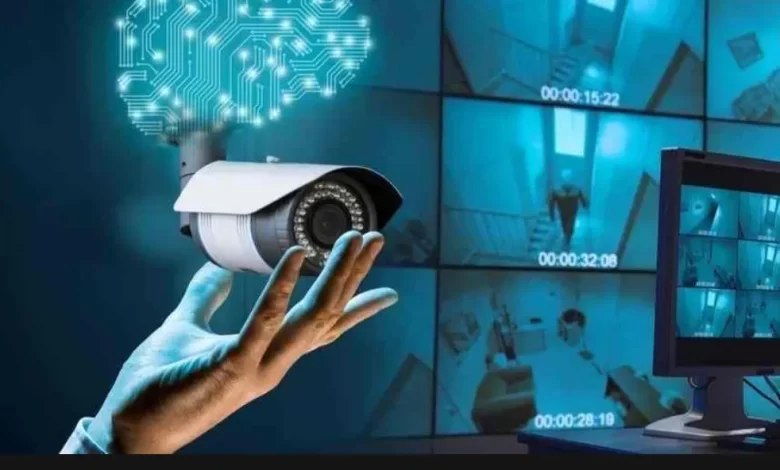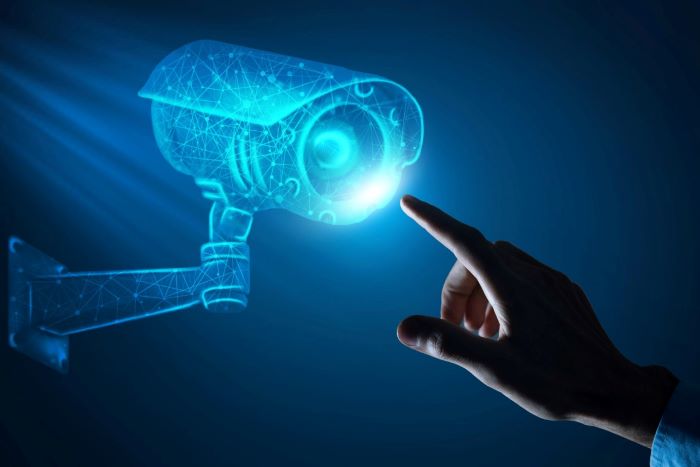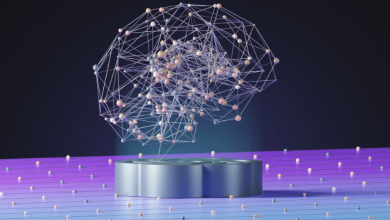
Businesses have long faced numerous security challenges, from theft to unauthorized access. When threats evolve, so must the countermeasures that are put in place to deal with them.
Over the past few years, artificial intelligence has become one of the effective tools that can be useful for business security strategies. This article focuses on understanding how AI surveillance is reshaping business safety, its advantages, and the considerations for its implementation.
The Evolution of Business Security
In the past, business security mostly involved physical features like doors with locks, alarms, and guards. However, some of these methods fell short, especially in the areas of scale and real-time monitoring and response. New developments came with the introduction of surveillance cameras which offered tangible proof as well as a warning sign to any would-be offenders. However, these systems needed constant supervision from human beings which were quite costly and often subjected to human errors.
Enter AI-powered surveillance. Leveraging advancements in artificial intelligence, machine learning, and computer vision, these business security cameras offer automated, intelligent monitoring solutions. They can process massive amounts of information, detect regularities, and inform security officers about threats, which contributes to the improvement of the effectiveness and productivity of business security.
Key Features of AI-Powered Surveillance Systems
AI-powered surveillance systems harness advanced algorithms and real-time data analysis. Here are the key features:
Real-Time Threat Detection
Real-time monitoring of different activities or behaviors can be seen and analyzed by AI-powered surveillance systems. For example, they can identify trespass, lingering around, or any other suspicious activities and promptly alert the security departments. This proactive approach reduces the overall response time and also prevents incidents from occurring in the first place.
Enhanced Video Analytics
Traditional security cameras record hundreds of hours of video, which are only watched when something bad happens. AI means that this footage is processed and analyzed to determine such events saving time and resources for video analytics. For instance, facial recognition, license plate recognition, and objects detected offer intelligence and evidence.
Scalability and Flexibility
AI systems are very much scalable and can be adopted by various types of businesses and organizations. These systems can also be customized for any type and size of premises ranging from a small retail outlet to a huge industrial compound. Also, they can complement existing layers of security and are not prescriptive on how they need to be deployed.
Predictive Capabilities
AI systems use data on past occurrences to forecast a security breach or an occurrence. For example, they can detect cases of shoplifting within retail stores or anticipate zones of high traffic density that would need enhanced security during certain hours.
Operational Efficiency
Apart from security, the use of artificial intelligence in surveillance boosts general performance. For instance, in a retail context, it can offer information on the customers thus improving the layout of the stores and the purchase experience. In industrial settings, it can also keep track of equipment and processes, alerting workers to problems before they become big enough to shut down a production line.
Benefits of AI-Powered Surveillance for Businesses
AI-powered surveillance systems leverage advanced technology to enhance business security through the following.
Improved Security and Safety
The main advantage of using AI in surveillance is increased security. Using real-time surveillance and threat alerts, the occurrence of theft, vandalism, and other security breaches can be quickly addressed to minimize their impact. This not only can safeguard resources but also can guarantee the security of employees and customers.
Cost Savings
Although AI-based surveillance systems can be costly when they are installed, they are cheaper to maintain in the long run. Automated monitoring minimizes the amount of supervision that is required from people, thus reducing costs associated with labor. Also, reduced theft, fraud, and damage can help save a lot of money, time, and resources in the long run.
Compliance and Legal Protection
It is important to note that a majority of industries are governed by regulatory standards with regard to security and data protection. These regulations can be met through the use of AI surveillance systems since they create records and proof of the security measures being implemented. Which in case of legal disputes can be invaluable.
Enhanced Customer Experience
In retail and hospitality fields, AI surveillance can positively affect customer satisfaction. Store planning, queue control, and specific services can be fine-tuned with the help of customer behavior studies. This not only increases customer satisfaction but, in turn, sales, and revenue as well.
Efficient Resource Management
It is also important to understand that AI surveillance does not only affect people but also assets and processes. In industrial and logistics environments, this can lead to more efficient resource utilization. For instance, the movement of merchandise and equipment can be tracked to enhance stock movements and cut losses.
Implementation Considerations
Despite the numerous benefits, implementing AI-powered surveillance requires careful consideration of several factors:
Data Privacy and Security
AI surveillance and monitoring include the gathering and analysis of big data, personal data in particular. Companies have to make sure they do not violate certain rules concerning data protection, including the General Data Protection Regulation (GDPR). It is important to ensure that this information is protected from data breaches by employing stringent data security measures.
Ethical Concerns
One major ethical concern that arises with AI surveillance is the issue of privacy and consent. Employers have to disclose their utilization of surveillance mechanisms and get permission as needed from workers and consumers. Also, they need to put in place measures to avoid misuse of the technology including tracking or profiling without the consent of the individuals.
Integration with Existing Systems
For businesses with existing security systems in place, integrating AI surveillance can be quite complex. The solutions have to be compatible with the existing systems to ensure that they can be integrated with it without creating a lot of disruption.
Data Privacy and Security
AI surveillance encompasses the gathering and analysis of big data, including personal data. Companies need to make sure that they are not violating any GDPR or other data protection laws that apply in their region. To ensure this information is not compromised it is important that good data security measures are put in place.
Ethical Concerns
Another potential ethical issue that arises from AI surveillance is privacy and consent. Employers are required to explain their surveillance practices and ensure that all necessary consents are received from the employees and customers. Furthermore, they should establish measures for the non-permissible use of the technology including stalking or profiling.
Future Trends in AI-Powered Surveillance
The field of AI-powered surveillance is rapidly evolving, with several emerging trends that promise to further enhance business safety:
Edge Computing
Edge computing implies the processing of data closer to the source of the data, for instance within the camera. This eliminates delays in communication thereby allowing for quicker decision making hence less strain on the network.
Advanced Analytics
Advanced analytics such as predictive analytics and anomaly detection will also be incorporated into future AI-powered surveillance systems. This will help the businesses to be in a position to minimize the occurrences of security incidents.
Integration with IoT
The Internet of Things (IoT) is opening new prospects for applying Artificial Intelligence in surveillance. Surveillance systems can offer a more advanced security solution when connected to IoT devices including smart locks, and motion detectors, among others.
Improved Facial Recognition
It is noteworthy that the use of facial recognition technology still progressing, and it is becoming more effective. This will increase the effectiveness of AI-based monitoring systems in recognizing people and monitoring their activities in various facilities.
Ethical AI
With the increasing concerns over privacy and ethical considerations, there will be more emphasis on creating ethical AI solutions for use in surveillance. This comprises mitigating biases in the systems and being open about the employment of the technology.
Conclusion
AI surveillance is a great improvement to business security since it offers better security, functionality, and data in the aspect of security. That is why, when new and changing security risks are encountered by companies, intelligent systems are necessary. However, the implementation of such a system has its set of data privacy concerns, ethical dilemmas, integration challenges, and training of the employees.
With the help of integrating AI technologies into the surveillance systems, not only the assets and people will be safeguarded, but also the organizational processes and customer experience will be enhanced. In the future, it will be influential on business safety as it progresses over time in the future.
FAQs
How is AI surveillance more effective than normal business security precautions?
The use of AI in security eliminates the need to constantly assess security threats and process vast amounts of data as this is done automatically and results in quicker and more efficient threat responses. Compared to the conventional methods, it does not need supervision from a human being and it does not have bias.
What threats does AI-based surveillance present to data privacy?
AI in public surveillance is crucial since it involves the collection and processing of personal data, thus negating privacy and principles like GDPR. Employers have the duty of ensuring secure data protection and getting consent from employees who are under surveillance.
Is AI surveillance beneficial to small businesses in terms of its impact on their wallet?
While investment costs might be relatively high, the savings that result from efficient AI-based surveillance of the premises are annual labor costs as well as losses from theft and vandalism. There are cost-effective solutions that can be implemented to address several needs of small business organizations.








